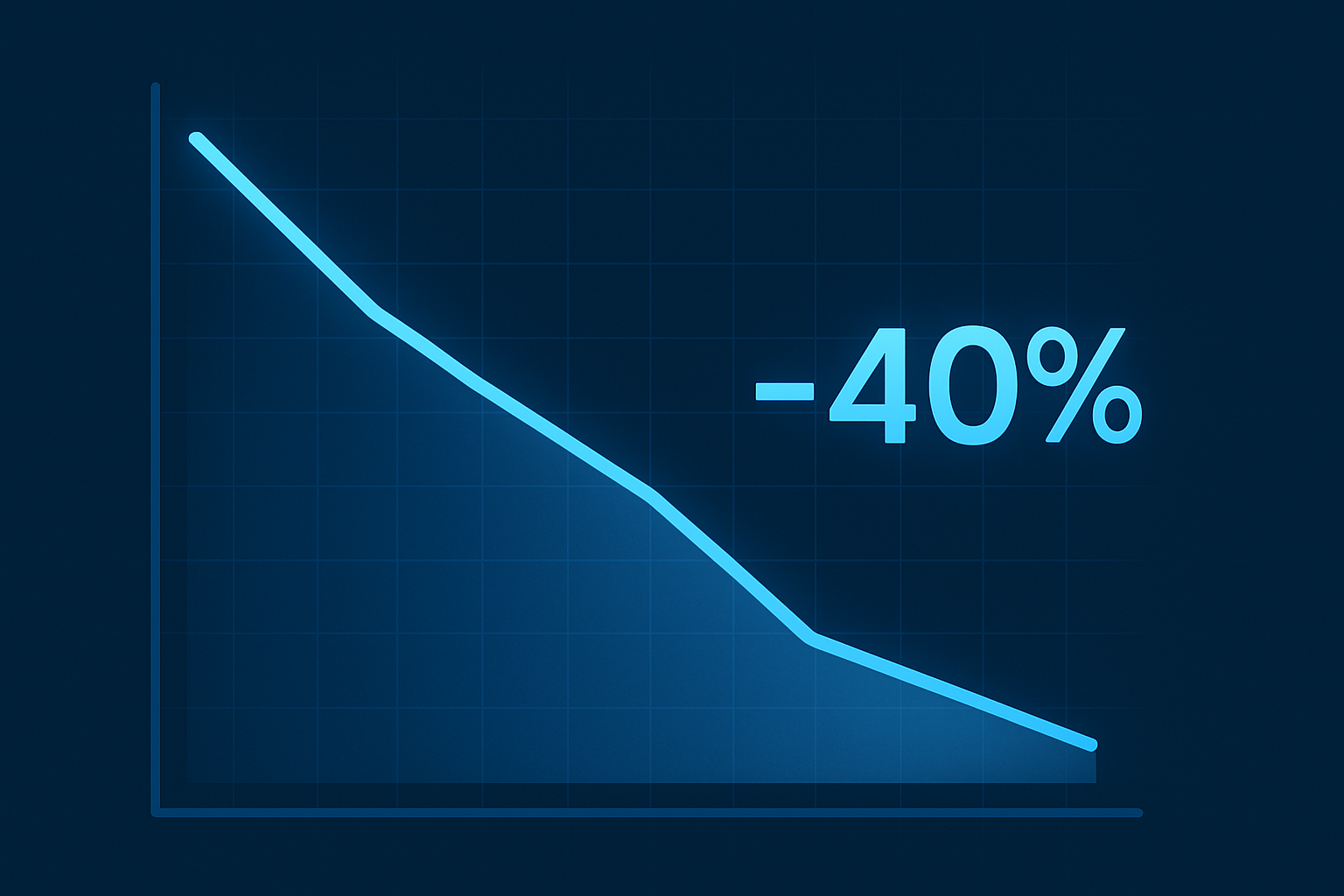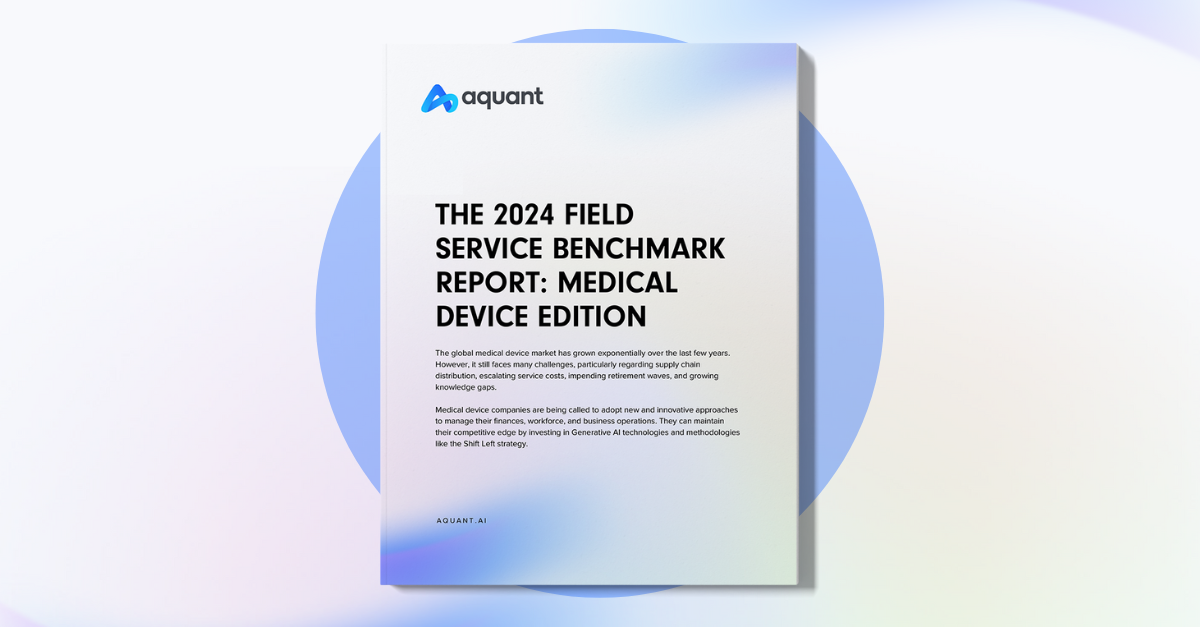The global medical device market has experienced significant growth in recent years but still faces several challenges, including supply chain distribution, rising service costs, impending retirements, and knowledge gaps. According to Aquant’s 2024 Medical Device Service Benchmark Report, investing in appropriate technologies and tools, such as Generative AI, and implementing strategies like Shift Left can help these companies maintain their edge in the industry.
This year, we analyzed findings from leading medical device companies specializing in patient-facing technologies, as well as medical device companies specializing in lab equipment technologies. Our dataset spanned:
- 50+ organizations.
- More than 7.6 million work orders spanning nearly 1.4 million assets.
- More than 26,000 technicians.
- Over $3.7 billion in service costs.
Key Findings
We reviewed trends across technologies typically found in laboratory and patient-facing settings. We learned:
Patient-Facing Medical Device Companies
- In the case of First Time Fix Rates, the skills gap is more apparent in medical device companies with patient-facing technology, possibly due to the more dynamic nature of the environment. Managing spare parts and tracking parts for work orders and repairs can directly impact First Time Fix Rates. Connectivity is also an issue in hospitals; many knowledge solutions can fail because they lose connection.
- They have more Visits Per Asset Per Year than medical device companies specializing in lab equipment because patient-facing assets are designed to operate at scale (due to many daily users). Thus, the equipment requires more maintenance, and service styles tend to skew toward break-fix reactions.
- The Resolution Time is faster—the expectation is that the product will break due to the level of daily use. The ramifications of downtime are more critical, so companies put more effort into fixing an issue as soon as possible. At medical device companies with patient-facing technologies, a failed first visit could lead to three visits overall to resolve the issue and 13 extra days added to the Resolution Time. Also, bottom-performing companies take five times longer to resolve an issue than top-performing companies.
- In medical device companies with patient-facing technologies, bottom performers at top companies cost 31% more than the highest performers. However, bottom-performing companies’ lowest-performing employees can cost 94% more than the top performers! There is also a cost-saving opportunity if overall workforce performance was boosted to the level of the top 20% of performers—these organizations would see cost reductions as high as 16%.
Lab Equipment Medical Device Companies
- Generally, medical device companies with lab technologies have higher First Time Fix Rates than those with patient-facing technologies. They also have a smaller skills gap. This can be attributed to the more straightforward nature of their equipment, consistent builds, and streamlined service training process.
- They typically have more extended Resolution Time than companies with patient-facing technologies. In the case of medical device companies specializing in lab technology, a failed first visit could lead to three visits overall to resolve the issue, as well as 15 days added to the Resolution Time. Additionally, bottom-performing companies take four times longer to resolve an issue than top-performing companies.
- In top medical device companies with lab technology, bottom performers cost 25% more than the highest. However, the lowest-performing organizations have the most expensive workforce gap, with their bottom performers costing 106% more than the top-performing employees. That’s more than double the cost! However, if everyone had the knowledge and skills to perform like the top 20% of the workforce, service costs would be reduced by as much as 19%.
[Free Resource] The market for medical devices has been rapidly growing in recent years—but is currently facing issues with supply chain distribution, increasing service costs, upcoming retirements, and knowledge gaps. Download the 2024 Medical Device Benchmark Report to see where you stack up.
Customer Experience Gap
Many companies measure their First Time Fix Rates within 7-day or 14-day windows, but this approach can lead to a significant gap and frustrating customer experiences. It’s easy to overestimate First Time Fix Rates and underestimate Resolution Costs when using smaller increments.
We recommend measuring the First Time Fix Rates over 30 days. It’s also essential to upskill your team and ensure every service team member has equal knowledge about the equipment and best practices.

“Leveraging data isn’t just about collecting it; it’s also about making sense of it in a way that matters.
Using data to boost the customer experience and improve things for our employees is critical. After all, retaining people is much easier than hiring new ones. This means we need ways to turn all that data into fundamental insights, helping our customers and team members thrive.”
– Paul McDermott, Director of Service and Support, T2 BioSystems
How are best-in-class medical device companies getting ahead and staying ahead?
Top-performing medical device organizations have a few things in common. They tend to:
- Emphasize soft-skills training and in-house technical expertise as technology advances.
- Build and expand in-house technical teams to offer a more personalized and immediate response to technical challenges.
- Embrace the connectivity and serviceability trends, especially since modern medical devices are becoming more complex, incorporating advanced technologies such as AI, robotics, and wireless connectivity.
- Implement the right analytics, the Shift Left strategy, and AI and AR tools that provide actionable insights, drive operational efficiency, improve patient outcomes, and inform strategic decision-making.
Empower your medical device service organization with the right insights, tools, and plans to hit (and exceed!) business goals.
Inspired by the report findings? Sign up for Aquant’s 7 Day Challenge!
Our AI engine will process your data to show your key metrics (including First Time Fix Rate) and ways to increase workforce efficiency and save money.
Recent Posts
-

How Businesses Can Avoid Becoming Part of Gartner’s Predicted 40% Failure Rate in Agentic AI Projects
Read More »July 14, 2025 Assaf Melochna







